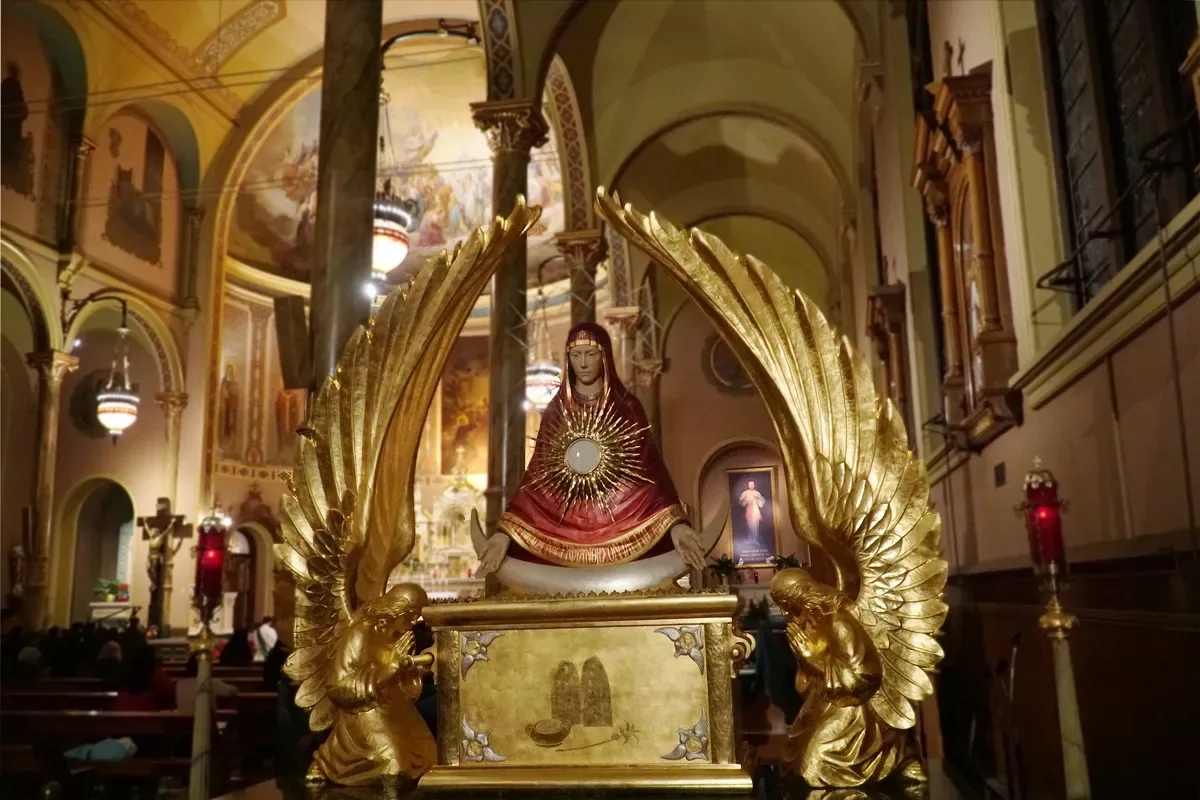The Ark of the Covenant: Quick Overview of its Biblical Role

The Ark of the Covenant, a sacred and iconic artifact, holds a central place in biblical history, symbolizing the presence of God among His people. This article provides a quick overview of the Ark's biblical role, exploring its significance, construction, and the pivotal moments associated with this revered object.
Construction and Design - Exodus 25:10-22:
The biblical account of the Ark's construction is detailed in Exodus 25. God provides specific instructions to Moses regarding the materials, dimensions, and design of the Ark. Crafted from acacia wood and overlaid with gold, the Ark featured a mercy seat with two cherubim, symbolizing the heavenly presence of God.
The Ark as God's Presence - Exodus 25:22:
One of the primary roles of the Ark was to serve as a tangible representation of God's presence among the Israelites. Exodus 25:22 states, "There I will meet with you, and from above the mercy seat, from between the two cherubim that are on the ark of the testimony, I will speak with you about all that I will give you in commandment for the people of Israel."
Transportation and Encampment - Numbers 4:5-15:
The Ark played a crucial role in the movement of the Israelites during their wilderness journey. Specific instructions were given regarding the handling and transportation of the Ark. Only the Levites, specifically the Kohathites, were entrusted with carrying the Ark, and it was to be covered before transportation to shield it from view.
Crossing the Jordan River - Joshua 3:13-17:
One of the dramatic moments involving the Ark occurred during the crossing of the Jordan River. As the priests carrying the Ark stepped into the river, the waters miraculously parted, allowing the Israelites to cross on dry land. This event symbolized the divine guidance and power associated with the presence of the Ark.
The Fall of Jericho - Joshua 6:6-20:
During the conquest of Jericho, the Ark played a pivotal role. The Israelites, following God's instructions, marched around the city walls with the Ark for seven days. On the seventh day, the walls of Jericho collapsed, leading to the city's conquest. The Ark's presence symbolized divine authority and the fulfillment of God's promises.
Capture by the Philistines and Return - 1 Samuel 4-6:
The Ark faced a period of adversity when it was captured by the Philistines during the time of Eli and Samuel. However, the Ark's presence brought calamity upon the Philistines, prompting them to return it to Israel with offerings of restitution. This episode underscored the sacred nature of the Ark and the consequences of mishandling it.
Placement in the Temple - 1 Kings 8:1-11:
The final resting place of the Ark was within the Holy of Holies in Solomon's Temple. During the dedication of the temple, the Ark was brought into the inner sanctuary. The cloud of God's glory filled the temple, signifying divine approval and the acknowledgment of the Ark's central role in the worship of God.
The Ark of the Covenant stands as a remarkable symbol of God's presence, guidance, and covenant with His people in the Old Testament. Its construction, transportation, and involvement in key biblical events highlight its central role in the unfolding narrative of Israel's history. While the Ark's physical whereabouts remain a mystery, its enduring legacy and spiritual significance continue to resonate in biblical scholarship and religious traditions.
At Kid's Study Bible, we are dedicated to making the Bible come alive for young minds. Our platform offers a rich blend of interactive maps, captivating stories, and engaging resources tailored for children. With a focus on accessibility and understanding, we break down major Bible sections, explore geography, and provide a kid-friendly glossary. Join us on this exciting journey of discovery, where we strive to make learning about the Bible a joyful and enriching experience for every child.
Introduction and Background
- Genesis
- Exodus
- Leviticus
- Numbers
- Deuteronomy
- Joshua
- Judges
- Ruth
- 1 Samuel
- 2 Samuel
- 1 Kings
- 2 Kings
- 1 Chronicles
- 2 Chronicles
- Ezra
- Nehemiah
- Esther
- Job
- Psalms
- Proverbs
- Ecclesiastes
- Song of Solomon
- Isaiah
- Jeremiah
- Lamentations
- Ezekiel
- Daniel
- Hosea
- Joel
- Amos
- Obadiah
- Jonah
- Micah
- Nahum
- Habakkuk
- Zephaniah
- Haggai
- Zechariah
- Malachi
- Matthew
- Mark
- Luke
- John
- Acts
- Romans
- 1 Corinthians
- 2 Corinthians
- Galatians
- Ephesians
- Philippians
- Colossians
- 1 Thessalonians
- 2 Thessalonians
- 1 Timothy
- 2 Timothy
- Titus
- Philemon
- Hebrews
- James
- 1 Peter
- 2 Peter
- 1 John
- 2 John
- 3 John
- Jude
- Revelation